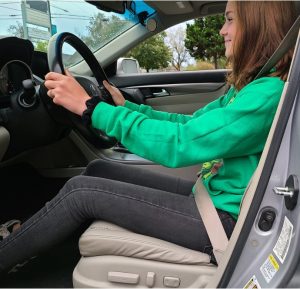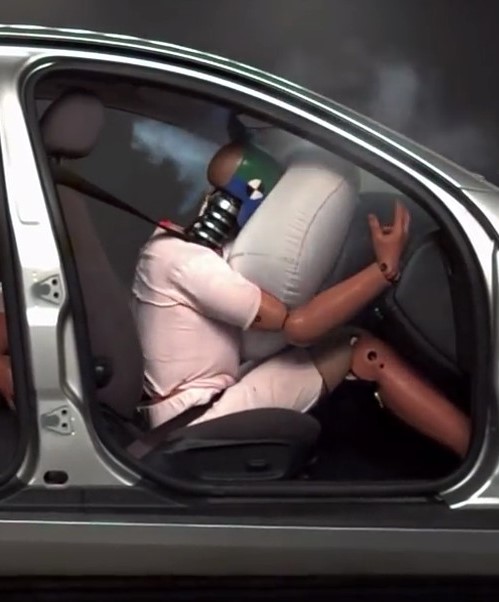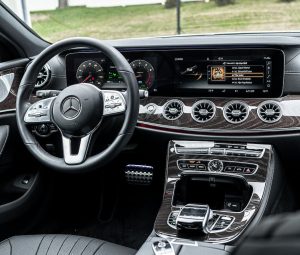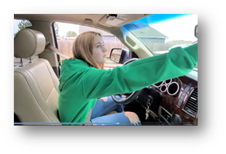Lesson Two: Preparing to Drive (1.2)
Approach with Awareness
Always be aware of your surroundings. As you walk toward your vehicle, even in your driveway, keep an eye on what is happening around you and your vehicle. Having your key fob in your hand allows you to enter your vehicle quickly. If you feel you are in danger you can use the alarm button to draw attention to your situation. Remember to look inside the car before entering the vehicle for anything or anyone that should not be there.
Approaching the Vehicle
What should you check before entering the vehicle?

Preparing the Vehicle
 Pre-Drive
Pre-Drive
LSMILE
When you are in the vehicle, there is an easy way to remember all the things you must do before driving.
L = ________________________________
S = ________________________________
M = _______________________________
I = ________________________________
L = _______________________________
E = _______________________________
The correct driver seating position includes the hips pushed all the way to the back of the seat and the heel on the floor with the ball of the foot on the brake. Also, be sure the knees and elbows are slightly bent and the torso is at least 10 inches away from steering wheel.
Safety Belts
 Safety belts are the single most effective thing you can do to protect yourself in a crash. The use of safety belts during a crash helps keep you safe and secure inside your vehicle; being completely ejected from a vehicle is almost always deadly. There are many advantages to wearing a safety belt.
Safety belts are the single most effective thing you can do to protect yourself in a crash. The use of safety belts during a crash helps keep you safe and secure inside your vehicle; being completely ejected from a vehicle is almost always deadly. There are many advantages to wearing a safety belt.
- Keeps you in the driving compartment
- Keeps you in the vehicle
- Keeps you from impacting others in the vehicle
- Slows your body down gradually
- You are not thrown into the crash

Airbags are supplemental protection and are designed to work with safety belts, not replace them. Your body will still move forward even while wearing a safety belt. The material is designed to stretch, under extreme pressure, and slow you down gradually in a crash.
 Safety Belts and Movements
Safety Belts and Movements
Mirrors
Vehicle mirrors help you gain important information while driving. They must be adjusted properly so that you can gather information quickly and accurately. Properly adjusted outside rear view mirrors increase your visibility to the sides and rear of your vehicle. The properly adjusted inside rear view mirror increases your visibility to the rear.

 Mirror Adjustments
Mirror Adjustments
Starting and Securing Procedures
Before moving the vehicle, keep your foot on the brake, shift to drive, and release the parking brake. When securing the vehicle, keep your foot on the brake, activate the parking brake, shift to park, turn off accessories, then turn off the vehicle. Before you exit the vehicle, check your mirrors and blind spot. Vehicles have different designs but the same basic components. Become familiar with the vehicle you are driving.
Essential Questions
-
Describe the process used to get ready to drive.
-
How do these steps help you manage risks while driving?
